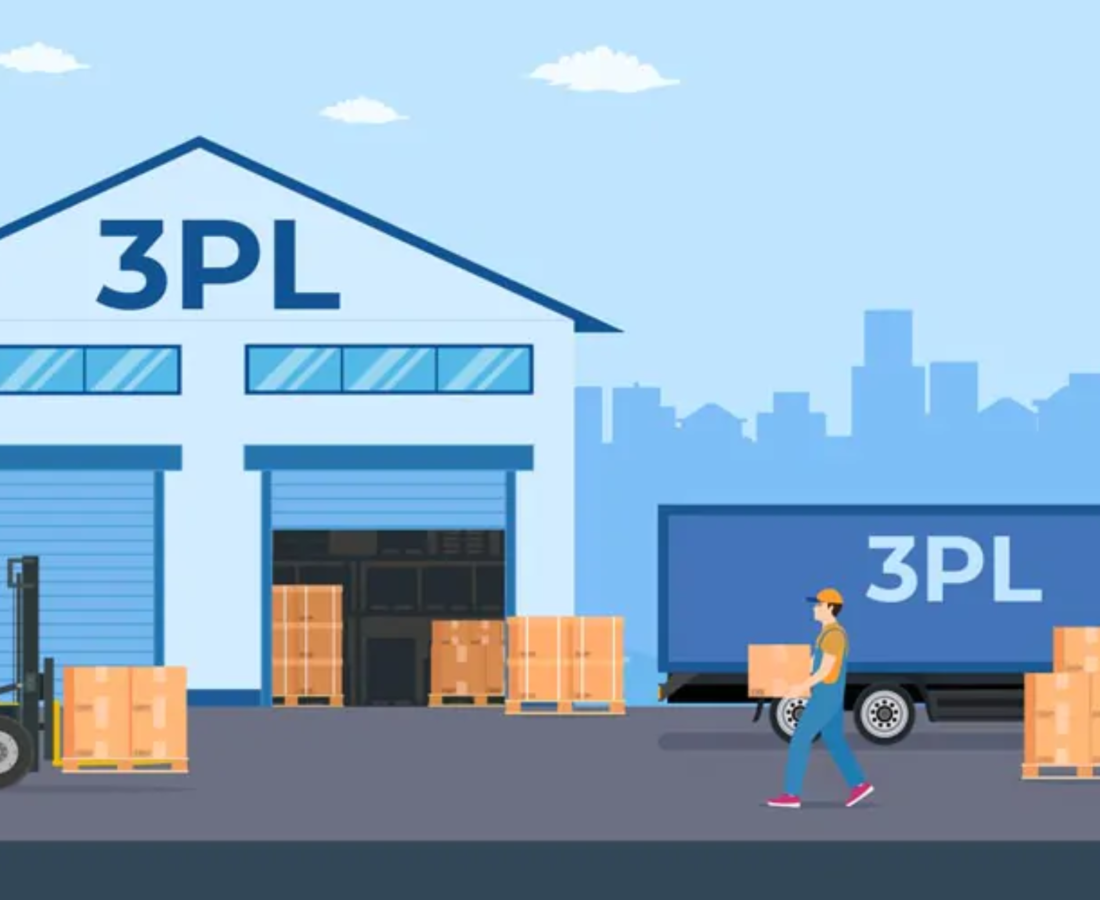A report indicates that 90% of Fortune 500 businesses use 3PLs to handle their logistics and supply chain operations. The primary role of a 3PL provider is allowing their customers, i.e., primarily e-commerce and B2B businesses to scale without needing to invest in additional warehousing or labor. This includes warehousing, picking and packing, shipping, etc,.
Recently, there has been an increase in the herculean responsibility of the post-purchase phase (dealing with high customer expectations for timely, transparent, and reliable delivery). However, as your 3PL business scales and your customer base grows, managing post-purchase operations manually can become unmanageable.
The post-purchase phase comprises shipping, delivery, and returns — all of which you have almost no control over and have to rely on carriers and the experiences they provide.
As these areas, which you have no expertise in, now fall under your responsibility, achieving your fullest potential or meeting the end user’s expectations can be a real challenge.
What is 3PL Automation?
At its core, 3PL automation is all about making logistics smarter, faster, and more efficient by reducing manual work and leveraging technology. This means instead of relying on human labor for tasks like inventory tracking, order fulfillment, and shipping coordination, you let automation take over.
For example, with tools like automated storage and retrieval systems (AS/RS), warehouse management systems (WMS), and autonomous mobile robots (AMRs), 3PL providers can easily manage larger order volumes, reduce errors, and optimize space without worrying about high labor costs.
Moreover, with post-purchase automation, 3PL providers can offer better transparency and reliability, meeting the evolving expectations of modern customers without manual intervention. All these benefits come together to ensure seamless operations right from the warehouse to the customer’s doorstep.
Key Technologies Involved in 3PL Automation
When talking about 3PL automation, we cannot ignore the ground-breaking technologies that run the show. These include:
1. Internet of Things (IoT)
IoT is a technology that helps connect different devices within a logistics network seamlessly. It uses smart devices to send real-time data to a central system, alerting stakeholders immediately if there’s any gap. For example, you can use IoT-enabled pallets in your warehouse to track inventory movements. This is an efficient way to stay on top of things and reduce the risk of misplaced stock.
2. Robotics
Robots have made their way out of sci-fi movies and into modern warehouses. For example, autonomous mobile robots (AMRs) and automated guided vehicles (AGVs) can easily handle tasks like picking, packing, and transporting goods around the facility. They cut down processing times, reduce the risk of human error, and free up your staff for more strategic tasks. In fact, some facilities are even experimenting with collaborative robots, called ‘cobots,’ to blend automation with a personal touch.
3. AI and Machine Learning
AI and ML are the brains behind most automation systems. They analyze historical data to predict future trends, like anticipating delays, forecasting peak shipping times, etc. For example, you can use an AI-driven system to optimize delivery routes in real time. On the other hand, ML algorithms can be used to learn from new data, improving accuracy and fine-tuning warehouse operations.
4. Big Data Analytics
3PL providers deal with vast amounts of data at every step of the supply chain. As such, big data analytics has become an indispensable part of identifying patterns, pinpointing fast-moving and slow-moving products, and adjusting strategies. Big data tools process information from a wide range of sources, like customer feedback, delivery times, and inventory levels, to provide a detailed overview of operations, boosting your bottom line.
What are the Different Types of Automation That Can Be Implemented in Third-Party Logistics (3PL)?
3PL automation is not a one-size-fits-all solution. Depending on your pain points and the issues you want to address in the logistics chain, you can implement different systems and technologies like:
1. Warehouse Management Systems (WMS)
As the name suggests, a WMS is a 3PL warehouse automation solution that takes care of end-to-end warehouse management, from inventory tracking to order fulfillment. It equips you with a centralized dashboard that tells you exactly where every item is stored, predicts stock shortages, and even suggests the best paths for pickers in the warehouse.
2. Automated Storage and Retrieval Systems (AS/RS)
AS/RS further enhances warehouse efficiency by automating stock storage and retrieval. Imagine robotic shuttles zooming through packed shelving units to fetch items on demand. They help maximize space utilization and reduce the time it takes to locate and deliver items.
3. Robotic Arms
When we think about robotic arms, our minds instantly go to mega factories. But they can also be used in warehouses, especially for repetitive tasks like sorting, picking, and packing. For example, you can use robotic arms in a packaging line to swiftly pick up and arrange products for shipment.
4. Post-Purchase Automation
For the modern consumer, the post-purchase experience is as crucial as the purchase itself. Post-purchase automation focuses on streamlining processes such as shipment tracking, returns management, and customer communication. By implementing automated systems, 3PL providers can offer real-time updates to customers, manage returns more efficiently, and even analyze feedback to improve service.
5. Sorter and Conveyor Belts
Sorters and conveyor belts work together to move products from one point to another with minimal human intervention. They sort products based on destination, size, or priority and then swiftly transport them to packing areas.
How to Automate 3PL Post-Purchase Experience?
For 3PL providers, the post-purchase phase is critical as it can influence customer loyalty and operational success. You see, once goods leave your warehouse, you need to ensure every step, from shipping to returns, is smooth and efficient. But relying on manual processes can often lead to complications like delayed updates, billing errors, and a clunky returns process.
Automation can help solve these issues, helping you offer real-time shipment tracking, proactive communication, and efficient returns management.
But with so many areas to cover, where exactly do you start?
This is where all-in-one post-purchase experience software platforms like LateShipment.com come in. With LateShipment.com’s comprehensive 3PL post-purchase automation solution, you can drive customer retention and streamline operations without juggling multiple tools. Here’s how:
- Parcel Audit and Shipping Refund: Automates invoice audits and refund claims, ensuring cost recovery is maximized.
- Advanced Shipping Analytics: Provides in-depth insights through carrier performance reports and trend analyses, empowering smarter decision-making.
- Automated Shipping Insurance: Simplifies parcel insurance and claims management with auto-insurance at label creation and customizable coverage options.
- Delivery Experience Management: Enhances customer engagement with real-time order updates, proactive alerts, and customizable tracking pages.
- Returns Experience Management: Streamlines returns with a branded portal, automated label generation, and real-time status updates.
- Seamless Integrations: Connects with over 1200 carriers and top e-commerce platforms, ensuring all your logistics data is unified and actionable.
Benefits of 3PL Automation
Automation is not the future. It’s already here (and you don’t want to be left out).
By integrating an intelligent post-purchase platform, you can join the many 3PLs that enable automation to optimize operations and thereby maximize value for you and your customers.
Automation for 3PL Providers
1. Parcel Audit and Shipping Refunds
As a 3PL provider, integrating automated parcel audit solutions into your service offerings acts as a differentiator in a competitive market.
How it works: A parcel audit system effortlessly goes through each and every invoice and manages all eligible claims, including those for lost and damaged shipments where service level agreements (SLAs) around delivery performance were not met, and automatically files claims for refunds for them.
Benefits: Automation of parcel audits and shipping refunds helps you recover costs by up to 20% associated with service failures and other billing errors. Also, by systematically identifying and addressing these discrepancies, you can reduce the time spent on manual audits and claims processing.
2. Shipping Analytics
An extension of auditing shipping invoices and claiming refunds is its effect to give you detailed insights into carrier performance.
How it works: Audit systems help you with advanced shipping analytics that provide data-driven insights to identify patterns and trends, enabling you to make data-driven decisions about carrier and service selection. To make things even better, automation also allows you to track and monitor all customers’ shipments in transit service failures in real time and know what’s happening at a glance.
Benefits: Gain complete visibility into anticipating and resolving issues such as frequent delays and other inefficiencies to make smarter shipping decisions that help improve operations and optimize shipping costs. This especially comes in handy during times like peak season, when shipping volumes are multifold and late delivery refunds with major carriers are temporarily suspended.
Automation for E-Commerce Businesses Using 3PL
3PL businesses need to differentiate themselves from competitors and customer retention acts as a key differentiating factor. It’s easy to connect these dots. You need to own your post-purchase process by delivering value-added services that go beyond the basics and help you improve retention (and revenue).
1. Reduce Customer Inquiries
Customers are always anticipating their orders, and you’re staying dependent on carriers, and their delivery experiences don’t really help.
How it works: Automating key aspects of the post-purchase journey, such as real-time order tracking, enables even more in the form of proactive issue resolution and automated notifications. For instance, you can enable e-commerce businesses to keep their customers informed about their orders at all times, including issues that happen and suggestions to resolve them. Additionally, there are also post-purchase solutions that help businesses take things up a notch via branded tracking experiences.
Benefits for e-commerce businesses: Real-time shipment tracking with proactive order status updates and support alerts for shipment issues to reduce WISMO calls by 72%. Additionally, including marketing assets on order tracking pages and notifications can increase recurring revenue by 12%.
2. Streamlined Returns Experiences
Additionally, when things go wrong with deliveries, you don’t have to direct brands to external returns platforms by partnering with a post-purchase automation platform; you can integrate returns into your existing workflows.
How it works: Automated returns solutions make returns self-service for end users. For instance, customers with a need for a return will no longer have to reach out to support reps but instead initiate returns and exchanges on their own.
Benefits for e-commerce businesses: Post-purchase solutions with flexible return options, automated returns updates, and a self-service process can reduce returns processing time by up to 95% and increase revenue by 40%.
With a complete post-purchase automation system in place, you can now enable e-commerce merchants to offer excellent post-purchase experiences to their customers and have an assured chance at improving retention.
The exceptional value you can gain by implementing automation is evident. You can not only elevate your client relationships but also transform your logistics operations. This is where LateShipment.com comes in – to back up automation with post-purchase solutions that are designed specifically for 3PL providers.
Challenges and Considerations
Yes, automation is beneficial. But it’s important to balance the benefits with a realistic look at the hurdles. Here are some key challenges and considerations of 3PL automation to keep in mind:
1. High Setup Costs
Whether you’re installing robotic systems or advanced software platforms, investing in automation technology often comes with a significant upfront cost. Therefore, you must weigh it against potential long-term savings to make an informed decision.
2. Ongoing Maintenance Costs
Once your automation systems are up and running, keeping them in optimal condition isn’t free. Regular maintenance, software updates, and potential repairs add to the operational expenses. So, plan for these recurring costs in advance to avoid any hassle later.
3. Employee Training
Introducing new technologies means that your team will need to learn new skills. And so you’ll have to invest in comprehensive training programs to ensure a smooth transition and empower your team to fully leverage the new tools.
4. Integration with Existing Technologies
Most logistics operations already rely on a mix of legacy systems. Integrating new automation solutions with these existing technologies can often be challenging. So, make sure the tools you invest in can integrate seamlessly with your existing tech infrastructure before finalizing the purchase.
5. Security Risks
The more you rely on automation, the greater the need for robust cybersecurity measures. You need to conduct regular audits, update security protocols, and have a robust risk management strategy to protect sensitive data and avoid potential breaches.
Case Studies of Successful 3PL Automation
Let’s look at some real-world examples of how embracing automation can help overcome operational challenges and drive cost savings.
1. WinIT Corporation
WinIT Corporation is a global supply chain provider for eBay sellers and cross-border merchants. The company was facing a major challenge of managing hundreds of online sellers and ensuring 95% same-day shipping at its Los Angeles center.
To address this, it adopted an advanced robotic automation system where autonomous robots pick totes from high shelves and efficiently deliver them to operator workstations. This enabled them to store over 50,000 inventory bins in just 17,000 square feet, with a density exceeding 32 totes per square meter. At the same time, WinIT Corporation was able to fulfill orders quickly with 99% accuracy.
2. Logiscor
Logiscor, the logistics arm for Supermercados Piedra, revamped its Córdoba facility to keep up with the demands of omnichannel retail and a surge in online orders. The center integrated an AS/RS designed for handling boxes. The system was complemented by two dedicated pick stations and a put-to-light solution.
This automation helped Logiscor streamline the movement of more than 400 boxes, while the WMS software ensured all 1,500 SKUs were tracked with full traceability.
3. ECCO
ECCO, the renowned Danish manufacturer of shoes and leather accessories, faced significant hurdles in its returns process. It had limited tracking capabilities, which meant customers were often left in the dark about their return status, leading to a surge in service calls. The brand also struggled to gather comprehensive insights into why products were being returned.
To overcome these challenges, ECCO revamped its returns process by adopting an automated solution that connected them with a broad network of carriers. This enabled flexible, region-specific return options, allowing customers to initiate returns more seamlessly.
The result? Customers now enjoy a transparent, efficient returns experience with faster refunds, while ECCO benefits from richer data insights that help pinpoint product issues and optimize the overall return process.
Wrapping Up
3PL automation is an excellent way to transform not only your warehouse operations but the entire customer experience, especially in the post-purchase phase. Embracing advanced technologies like IoT, robotics, AI/ML, and big data analytics can help you overcome challenges, reduce costs, and ultimately ensure customer satisfaction at every step.








